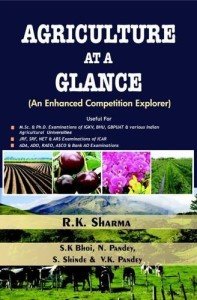Book Detail: Manures Fertilizers & Agrochemicals
Language: English
Pages: 184
Author: TNAU
Price: Free
Outlines of Manures Fertilizers & Agrochemicals
- Manures – types, composition and value – sources
- Green manures-Oil cakes-Sewage sludge-Biogas plant slurry-Plant and animal refuges
- Composting of organic wastes – composting technologies
- Classification of fertilizers – N, P and K fertilizers
- Nitrogenous fertilizers – sources – fundamental processes involved in manufacturing procedures for ammonia, sulphuric acid, nitric acid and phosphoric acid
- Manufacturing of ammonium sulphate, ammonium nitrate and ammonium chloride
- Manufacturing of urea
- Slow release N fertilizers – chemically modified forms – urea-formaldehyde, IBDU, CDU.
- Controlled release fertilizers and reaction in soil – nitrification inhibitors – criteria and advantages
- P fertilizers – rock phosphate – bone meal – basic slag
- Single and triple super phosphates – thermosphosphates – method of manufacturing
- Potassic fertilizers –manufacturing of KCl, K2SO4 and schoenite
- Secondary and micronutrient fertilizers- Manufacturing Zinc sulphate, and ferrous sulphate
- Complex fertilizers – manufacturing ammonium phosphates – nitro phosphates and NPK complexes
- Mixed fertilizers – sources – preparations- their compatibility – advantages
- Amendments-calcium sulphate and calcium carbonate
- Midsemester examination
- Biofertilizers- symbiotic and non symbiotic and their advantage
- Impact of fertilizers on the environment
- Fertilizer control order and Fertilizer storage
- Organic chemistry as prelude to agrochemicals- -Diverse type of agrochemicals
- Pesticides formulations – sprays – emulsion concentrates- water miscible liquids-dusts – wettable powders and flowables – manufacture, characteristics and uses.
- Pesticide formulation – granules, fumigants and aerosols – Manufacture – Characteristics and use. Insecticide classification – Organochlorines – Mode of action – lindane, endosulfan – Characteristics and use.
- Organophosphates – characteristics, preparation and use of monocrotophos, phosphamidan, and chlorpyriphos. Phorate, phosalone, dimethoate and quinalphos.
- Carbamates – characteristics, preparation and use of Carbaryl, carbofuran, carbosulfan and aldicarb
- Botanicals – characteristics, preparation and use of neem products, nicotine and pyrethrum.
- Characteristics, preparation and use of synthetic pyrethroids – Fenvalerate and Cypermethrin.
- Herbicides – Mode of action -Classification of organic herbicides – Characteristics – Use of 2, 4-D. , Butachlor, Glyphosate, Atrazine and Benthiocarp
- Fungicides – Classification – Inorganics – characteristics, preparation and use of sulfur and copper – Mode of action – Bordeaux mixture and copper oxychloride
- Organic fungicides – Mode of action – Dithiocarbamates – characteristics, preparation and use of Zineb and maneb.
- Systematic fungicides – Benomyl, carboxin, oxycarboxin, Metalaxyl, Carbendazim, characteristics and use.
- Insecticide act-Compatibility of pesticides with fertilizers and other Agrochemicals.
- Fate of pesticides in soil and plant.
- Plant growth regulators
Buy Book
Feedback: After Reading these ICAR eCourse, please give your feedback for improve of the e-Course contents on this website. Click Here
Disclaimer: The information on this website does not warrant or assume any legal liability or responsibility for the accuracy, completeness or usefulness of the courseware contents.
The contents are provided free for noncommercial purpose such as teaching, training, research, extension and self learning.
If you are facing any Problem than fill form Contact Us
If you want share any article related Agriculture with us than send at info@agrimoon.com with your contact detail.




I am student of b.sc( honor) agriculture